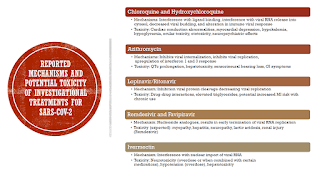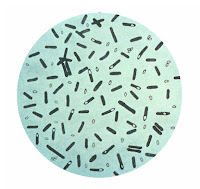Drug-induced Cardiotoxicity
-Jon Ford, MD
The following is a response to an educational ECG series from the UC Davis EM Residency Program which is led by Dr. Bryn Mumma. The ECG showed a widened QRS with a prolonged QTc due to a multi-agent overdose. Dr. Ford, who I like to refer to as our toxicology program's Program Director Emeritus, provided this mental model for drug-induced cardiotoxicity.
As you have pointed out, this is a complicated ECG. I will admit that when I looked at it, my eyes immediately went to the terminal R wave in aVR and the wide QRS and I thought classic sodium channel blocker. I admit that I do not have the expansive ECG knowledge base you do and I should have given it more thought. I am a basic person. When I teach about drug-induced cardiotoxicity, specifically drug-induced cardiac conduction problems, I like to break down the ECG into what each wave means in term of drug action and electropathophysiology.
As you know, there are a few facts we can use to understand the ECG changes that occur from drug-induced cardiotoxicity.
- The QRS represents cardiac myocyte depolarization and is dependent on the sodium channel rapidly opening and then closing. Na rushes in. A sodium channel blocker slows and prevents the usual amount of Na from rushing in therefore the QRS will be prolonged and the amplitude not as tall.
- The T wave represents repolarization and is a function of the delayed rectifier K channel (IKr) aka hERG channel. K must leave the cell. If a drug is preventing potassium from leaving the cell, repolarization is prolonged which is represented by a prolong QT but more specifically in the case of a drug that only affects the potassium channel, the S to T and T waves will be prolonged but the QRS will be narrow.
- The QRS is within the QT interval and therefore any drug that causes QRS prolongation must also prolong the QT.
Toxic and Drug-Induced Changes of the Electrocardiogram - Scientific Figure on ResearchGate. Available from: https://www.researchgate.net/figure/Cardiac-cycle-action-potential-with-corresponding-ion-changes-across-the-membrane-and_fig1_221923093 [accessed 11 Aug, 2023]
The challenge then is to identify where the electropathophysiology is and treat it accordingly. If there is a terminal R in aVR and/or wide QRS (>100ms in this case) were treat with sodium bicarbonate. If the QRS is narrow and there is no terminal R in AVR but the QT is prolonged, we optimize electrolytes, avoid other drugs that prolong the QT (e.g. antipsychotics), and keep the HR up. As you pointed out, treating a sodium channel blocker with sodium bicarbonate will adversely affect the action of the delayed rectifier channel in two ways. First by causing an intracellular shift of K+. Potassium needs to leave the cell for repolarization to occur so the intracellular shift is not helpful. Second, the lower extracellular potassium enhances IKr inactivation leading to prolonged depolarization. To make things even more confusing, we do not often even mention what is going on in the pacemaker cells which have their own unique electrophysiology and must also be affected by these drugs.
A Parametric Computational Model of the Action Potential of Pacemaker Cells - Scientific Figure on ResearchGate. Available from: https://www.researchgate.net/figure/Hybrid-automaton-description-of-a-pacemaker-cell-model-Nodal-type_fig1_316443472 [accessed 11 Aug, 2023]
It seems rare nowadays that we see single-agent toxicity and agents that only affect one channel. In this patient where there are multiple agents and both channels appear to be affected, we often treat both. Administer Mg, Ca, and K+ and something to keep their HR > 100 (no magic number just fast) and then we give sodium bicarbonate in boluses. We watch closely for any undesired effects. If sodium bicarbonate is lengthening the QT too much and we start to see more PVCs than we want to, we can push hypertonic saline. In the acute phase, you can get the sodium to 150-155 without problems. If this fails, we can use lidocaine as an antidysrhythmic. Lidocaine is a Vaugh-Williams 1b Na channel blocker antidysrhythmic with a fast on/fast off action and it binds more avidly to the sodium channel than most other drugs. I tend to say that in a scenario where you are struggling to stabilize a sodium channel blocker toxicity, you are better off with lidocaine bound to the channel than say amitriptyline. If the drug is lipophilic, we will often give 20% fat emulsion boluses IV (aka Intralipid) which acts as a "lipid sink" for some drugs. Finally, if this is not an option or is not working, patients with drug toxicity are, most of the time, excellent candidates for ECLS. They often do not have multisystem organ dysfunction (yet), and only need a day or two to metabolize which leads me to my final point with drug overdoses. It is important to have realistic goals and not try and do as much as you can to achieve normal vitals or normal mental status. Like sepsis and targeting a MAP >65 or TBI and preventing low BP, our goals in drug toxicities are to perfuse the organs so that the drugs can be metabolized and eliminated. Most drugs will not have a means of enhanced elimination. The liver and the kidneys need to stay healthy so the drugs can be eliminated as quickly as possible.
I hope that you enjoyed this explanation as much as I did. Keep an eye on this space for future content related to toxicology education and the happenings of the UC Davis Toxicology Fellowship Program.



Comments
Post a Comment